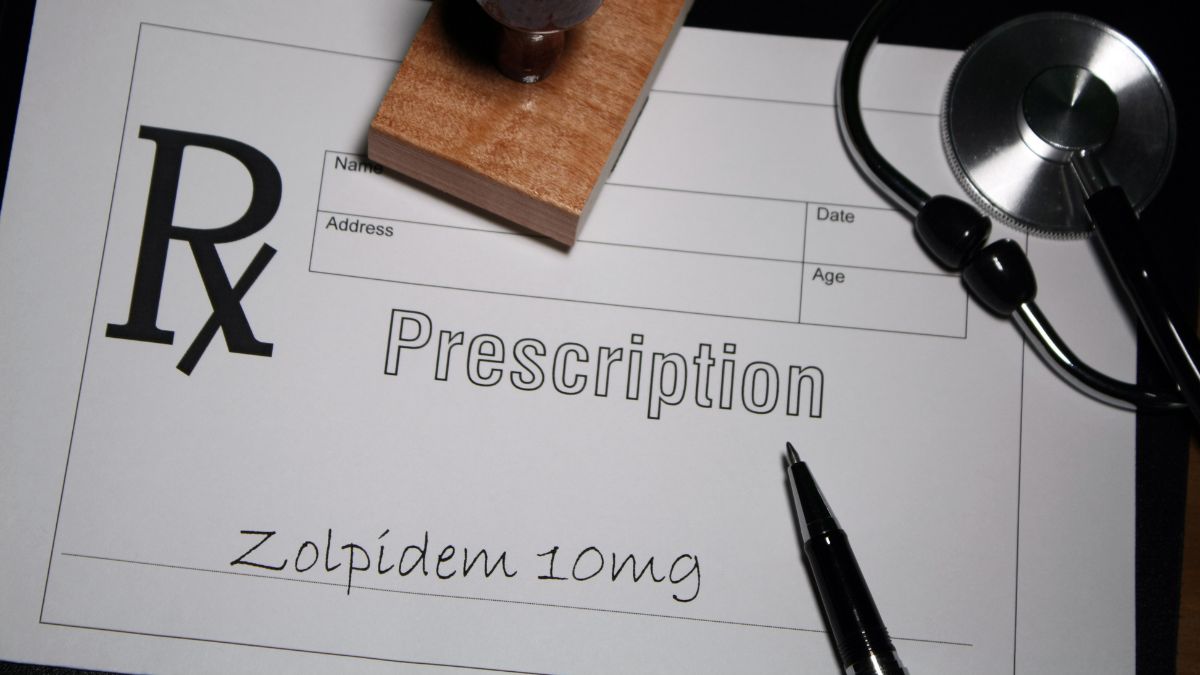Tramadol is an opioid, or painkiller, that is usually thought of as having a lower abuse profile than stronger opioids such as hydrocodone or oxycodone. However, like any opioid, it does make users feel good, providing them with a sense of euphoria that can easily induce habit formation. The withdrawal effects of tramadol can make it difficult to stop using the drug.
While not the most commonly abused opioid, tramadol abuse leads users to seek greater and greater quantities of the drug in order to achieve the same euphoric effects. Coming down off of tramadol, even when used as prescribed, can result in some painful withdrawal effects.
How Does Tramadol Work?
Tramadol is a painkiller that helps reduce pain by affecting the way your brain and nervous system work. Here's how it works:
- Blocking Pain Signals: Tramadol works by blocking pain signals in your brain and spinal cord. It does this by binding to opioid receptors, which are responsible for feeling pain, helping to reduce the pain sensation.
- Boosting Mood: It also increases the levels of serotonin and norepinephrine in your brain. These chemicals help control not just pain, but also your mood. This can make you feel a little better emotionally while relieving pain.
- Mild Opioid Effect: Although tramadol is weaker than stronger opioids, it still acts a little like one, which is why it can be addictive if used too much.
What leads to Tramadol Withdrawal?
Whether tramadol is used as medically prescribed or recreationally, tolerance can develop. When a user is dependent on tramadol, withdrawal symptoms can make it difficult to stop using the drug. Tramadol withdrawal is usually less intense than withdrawal from more powerful opioids such as heroin or oxycodone. However, within one or two days of last taking tramadol, opioid receptors, lacking their accustomed dose of the drug, will take notice of its absence and begin to initiate withdrawal processes. Unlike traditional opioids, however, tramadol not only activates opioid receptors but also inhibits the reuptake of serotonin and norepinephrine. Much like antidepressants such as SSRIs, tramadol inhibits the reuptake of these chemicals in the brain. That means it prevents these chemicals from being neurologically “recycled,” resulting in higher serotonin quantities in the brain than normal.
Call Design for Recovery to Begin Your Healing Journey!
Reach out to our team to discuss sober living options and next steps toward a healthier routine.
What are the Tramadol Withdrawal Symptoms?
If someone has been using tramadol for a long time and stops suddenly, they may experience withdrawal symptoms. These happen because the body has gotten used to the drug, and when it’s no longer available, it can affect both the body and the mind. Here are some common signs and symptoms of tramadol withdrawal:
Physical Symptoms:
- Nausea and Vomiting: One of the most common symptoms, feeling sick to your stomach or actually vomiting, can occur as the body detoxes from tramadol.
- Sweating and Fever: It often causes excessive sweating, along with chills or fever, as your body tries to regulate its temperature.
- Muscle Aches and Pain: Withdrawal can lead to muscle stiffness, soreness, and generalized pain throughout the body, making movement uncomfortable.
- Fatigue and Weakness: People going through withdrawal often feel extremely tired or weak, even after rest, as the body adjusts to the lack of the drug.
- Headaches: Persistent headaches can be a painful part of the withdrawal process, often linked to changes in brain chemistry.
- Shivering and Tremors: Many people experience shivering or shaking, a common withdrawal sign due to the body’s inability to regulate itself as it once did with tramadol.
- Increased Heart Rate: The heart rate may increase, leading to feelings of anxiety or discomfort, as the body’s systems start to return to their normal state without the drug.
Psychological Symptoms:
- Anxiety or Irritability: Feelings of unease or becoming easily frustrated can occur.
- Depression: A feeling of sadness or hopelessness may emerge, especially if tramadol was being used to manage mood.
- Difficulty Sleeping: Insomnia or restless sleep is common as the body adjusts to the absence of the drug.
- Cravings: You may have a strong desire to use tramadol again to relieve the uncomfortable symptoms.
- Confusion or Trouble Concentrating: Mental fog or difficulty focusing can make it hard to think clearly.
What is the Tramadol Withdrawal Timeline?
Once you start taking Tramadol, when its effect goes away, opioid receptors in the brain, lacking their accustomed dose of the drug, will take notice of its absence and begin to initiate withdrawal processes. The effects of withdrawal from tramadol, like withdrawal from other opiates, manifest as a flu-like feeling. It is common to sweat or experience extreme chills, often at the same time. It might be difficult to sleep, so escaping from the withdrawal can feel impossible.
While everyone’s withdrawal experience is different, the most common side effects of withdrawal are sweating, chills, irritability, anxiety, digestive issues, muscle aches and pains, confusion, increased blood pressure or heart rate, fast breathing, and even in some cases psychosis.
The length and intensity of these symptoms depend a great deal on the severity of the physical dependence on tramadol, as well as other personal factors such as the user’s age, physical and mental health, genetics, and general history with drug abuse. However, in most cases, withdrawal effects peak after three days and begin to subside in one or two weeks.
How to Taper Off Tramadol Safely and Manage Withdrawal Symptoms?
Quitting tramadol can be challenging, especially if you’ve been using it for a long time. But with the right approach, it's absolutely possible to stop safely and effectively. If you're wondering how to quit tramadol, there’s a structured way to do it without facing severe withdrawal symptoms.
Let's walk through the steps you can take to quit tramadol safely.
1. Consult Your Healthcare Provider
Before making any changes to your tramadol use, always consult a doctor or healthcare provider. They will create a personalized tapering plan based on your dosage, length of use, and overall health. Stopping tramadol suddenly can be dangerous, so professional guidance is crucial.
2. Gradual Dose Reduction
The goal of tapering is to reduce your dosage over time. Your healthcare provider may suggest the following approach:
- Start with a small decrease in your daily dose (e.g., reducing the dosage by 10-25% every few days or weeks).
- Slow and steady reduction allows your body to adapt, minimizing withdrawal symptoms.
3. Monitor Withdrawal Symptoms
As you decrease your dosage, keep track of any withdrawal symptoms, such as:
- Nausea
- Headaches
- Mood swings
- Muscle aches
If these symptoms become too severe, it may indicate that the tapering process is happening too quickly. In such cases, slow down the reduction rate and consult your doctor.
4. Adjust the Tapering Schedule as Needed
Depending on how your body reacts to the dosage reduction, your doctor may recommend adjusting the tapering schedule. Some individuals need a longer time to reduce their dose, especially if they’ve been using tramadol for a long period.
5. Use Supportive Medications (If Necessary)
In some cases, doctors may prescribe medications to help with withdrawal symptoms, such as:
- Anti-nausea medications for stomach discomfort
- Anti-anxiety medications for mood management
- Pain relievers to help with muscle aches and headaches
These medications are often used temporarily to make the tapering process more comfortable.
6. Stay Hydrated and Maintain Healthy Habits
While tapering off tramadol, it’s important to stay hydrated and eat a balanced diet to support your body’s recovery. Regular exercise, stress management, and sleep will also help with overall well-being and make the transition easier.
7. Aftercare and Support
Even after successfully tapering off tramadol, it's essential to continue monitoring your health. Support groups and therapy can help maintain sobriety and prevent relapse, especially if tramadol was being used for emotional or psychological relief.
Contact Design for Recovery Today!
Fill out our quick form to connect with a peer mentor and learn how our sober living community supports accountability, structure, and personal growth in recovery.
What is Tramadol Addiction?
Tramadol addiction occurs when a person becomes physically or psychologically dependent on the drug. Initially prescribed for pain management, tramadol can cause a feeling of euphoria in some individuals, leading them to misuse the drug to experience those effects repeatedly. Over time, the body builds tolerance, meaning higher doses are needed to achieve the same effect, increasing the risk of addiction.
Common signs of tramadol addiction include:
- Taking higher doses than prescribed or using the medication without a prescription
- Craving the drug or feeling preoccupied with obtaining it
- Inability to stop using, even when there are negative consequences
- Behavioral changes, such as mood swings or withdrawal from social activities
- Experiencing withdrawal symptoms when trying to stop using the drug, such as anxiety, nausea, and muscle pain
Why is Tramadol Addictive?
Tramadol affects the brain’s opioid receptors, which produce a feeling of pain relief, relaxation, and well-being. In addition, tramadol increases the levels of serotonin and norepinephrine in the brain, contributing to its mood-lifting effects.
The combination of these effects can make tramadol addictive, particularly for individuals who are already vulnerable to substance use disorders.
What are the Treatment Options for Tramadol Addiction?
Here are the treatment options for Tramadol Addiction:
Medical Detoxification (Detox)
The first step in treating tramadol addiction is detox, where the body clears the drug from its system. This process is often supervised in a medical setting, as withdrawal symptoms can be uncomfortable and, in some cases, dangerous. Medically-assisted detox ensures the patient’s safety during the withdrawal process.
Behavioral Therapy
- Cognitive Behavioral Therapy (CBT): CBT helps individuals identify and change negative thought patterns that contribute to their drug use. This therapy teaches coping strategies for handling stress and triggers.
- Motivational Interviewing (MI): MI focuses on encouraging individuals to make positive changes in their drug use behaviors by resolving ambivalence and building motivation for recovery.
Medication-Assisted Treatment (MAT)
For people with severe addiction, Medication-Assisted Treatment (MAT) may be used to help manage withdrawal symptoms and reduce cravings. Medications such as buprenorphine or naltrexone can help manage opioid cravings and block the euphoric effects of tramadol, making it easier to stop using the drug.
Inpatient and Outpatient Rehabilitation
Inpatient rehab provides a structured environment where individuals receive 24/7 care, therapy, and support. This is especially helpful for people who have been addicted to tramadol for an extended period and need intensive treatment. For those who don’t require 24/7 supervision, outpatient treatment allows individuals to attend therapy sessions while continuing to live at home.
Support Groups
Joining support groups such as Narcotics Anonymous (NA) or SMART Recovery can provide the emotional and social support needed to maintain long-term sobriety. These groups allow individuals to share their experiences and struggles with others who understand their journey.
Aftercare and Relapse Prevention
Recovery doesn’t end once treatment is completed. Aftercare programs offer ongoing support to help individuals maintain their sobriety and prevent relapse. This may include ongoing therapy, regular check-ins with a counselor, and involvement in support groups.
Get Support at Design For Recovery
Tramadol abuse can have serious consequences for both physical and mental health. Withdrawal from tramadol can be a difficult and uncomfortable process, and professional treatment is often necessary to ensure a safe and successful recovery.
At Design for Recovery, our men's sober living in Los Angeles offers a supportive and structured environment for individuals looking to overcome tramadol addiction and achieve lasting recovery. Our program combines evidence-based therapies, such as cognitive-behavioral therapy and mindfulness-based relapse prevention, with holistic and experiential activities to help residents heal and grow in all aspects of their lives.
Our men’s sober living program in Los Angeles offers a safe and supportive environment for individuals looking to achieve lasting recovery from tramadol addiction. Contact us today to learn more about our program and how we can help you or a loved one on the path to recovery.
- What leads to Tramadol Withdrawal?
- What are the Tramadol Withdrawal Symptoms?
- What is the Tramadol Withdrawal Timeline?
- How to Taper Off Tramadol Safely and Manage Withdrawal Symptoms?
- What is Tramadol Addiction?
- What are the Treatment Options for Tramadol Addiction?
- Get Support at Design For Recovery
Begin Lasting Sobriety Now!
Frequently Asked Questions
Common symptoms of tramadol withdrawal include nausea, headaches, muscle aches, sweating, anxiety, irritability, and insomnia. Some people may also experience fatigue or cravings.
It usually lasts between 5-7 days. Symptoms are typically most intense during the first 2-3 days, with the severity gradually decreasing over time.
Tramadol withdrawal is generally not life-threatening, but in some cases, it can cause severe symptoms like seizures or dehydration, especially for those with other medical conditions. It’s always best to consult a doctor.
Treatment for tramadol addiction includes detox, behavioral therapy, and medication-assisted treatment (MAT). Programs like inpatient rehab, outpatient therapy, and support groups can also help with long-term recovery.
Medical detox isn’t always necessary, but it can help manage withdrawal symptoms safely, especially for those with severe addiction or long-term use. A healthcare provider can guide you through the best option.







Written By
David Beasley